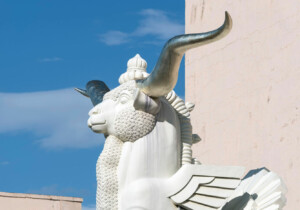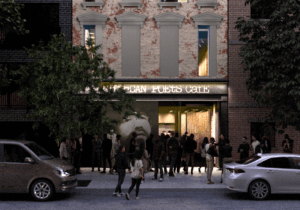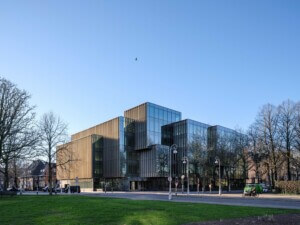In September, the Mexican-born artist Bosco Sodi responded to Trump’s border wall plans with “Muro,” a one-day performance installation in Washington Square Park in downtown New York City. “Muro” translates to “wall” in Spanish, an apt title for what Sodi built, brick by brick, with the help of his Mexican creative friends living in the city and anyone who happened to be in the park between 3 and 8 p.m. After every brick was stacked, the wall was torn down by the same people who might otherwise be on both sides of the wall, suggestively breaking down physical and mental barriers.
Sodi made 1,600 clay bricks for Muro by extracting raw earth and mixing it with water and sand to form clay–a vernacular Mexican building material. The clay was then shaped and smoothed by hand into solid cubes that were left to air dry in the sun at his studio in Oaxaca, Mexico. Once cured, the cubes were fired in a traditional brick kiln with wood, jacaranda seeds, and coconut shells.
Using the same process, Sodi formed clay cube sculptures, which he considers “living sculptures,” for Caryatides, his first solo exhibit at Paul Kasmin Gallery, on view until January 6, 2018. Stacked in a series of volumes, the cubes are a material amalgam of varied terra cotta hues, streaks of green and black, and jolie laide surfaces.
The Architect’s Newspaper spoke with Bosco Sodi about his exhibit and his process.
Architect’s Newspaper: Why clay?
Bosco Sodi: Clay is one of the early material building materials. It is poetic, representing the essence of human building.
I have been using clay for 3 years. It began when I started to go very often to see the [local] clay workers. I visited them and started to experiment. I wanted to do something that was seemingly impossible to develop with the material. It took a year to develop a cube that did not split and break. We made them by hand, and then we let them dry in the sun for two months, then they cook in the kiln. Each [Caryatides] cube weighs 3,000 pounds.
AN: What is unique about your process of making these works?
BS: Made with no mold, they are completely human-formed. The materials [themselves] are unpredictable; they create a unique result each time. The clay cubes and bricks are made by hand, in the same process to build the wall in Washington Square Park and the sculptures in the gallery. They are political pieces.
AN: How is the material political?
BS: All of the bricks have different colors, yet they are made the same. They are the metaphor of the dream of what it meant to come [to the United States].
AN: And then, the political meaning came into form as performance at the Muro installation?
BS: Yes. We put up a wall in the U.S. made by Mexicans with Mexican elements: sun, water, fire, wind, and earth. It was made in a public place, New York, by Mexicans. Then, we let everyone take it down. It was a social performance where you become part of a happening and a result of the piece.
Caryatides, the first solo exhibition devoted to Bosco Sodi’s clay cube sculptures, is on view through January 6, 2018 at Paul Kasmin Gallery on 515 West 27th Street.
*This interview was edited minimally for clarity.










